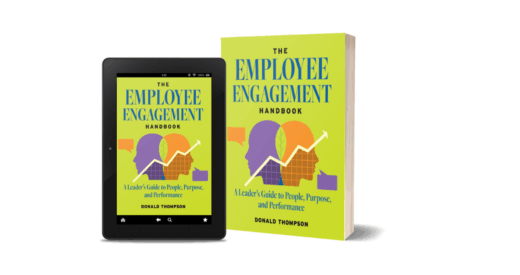Understanding the unique challenges of diversity, equity and inclusion (DEI) in Canada first requires a knowledge and appreciation of the country’s unique history and population demographics. Furthermore, it requires consideration of many key terms that are common in Canadian workplace parlance, how they have evolved over time, and how they are decoded differently in various provinces and territories.
In this article, we will examine the forces that are shaping DEI initiatives across Canada throughout the past decades, identify influences on DEI initiatives that are unique to Canada, and explore how past efforts to label diverse populations might be impeding the quality of DEI rollouts at several Canadian organizations.
Immigration has accentuated the differences between Canada’s individual provinces and territories
In the most recent Canadian census, collected in 2016, 22.3 percent of Canadians were labeled as “visible minorities.” For those who may be unfamiliar with the term, this category was originally devised to classify all non-European immigrants in a way that set them apart from other groups regarded as being either native to or early settlers of Canada. It does not include Indigenous or Aboriginal Canadians.
Over time, the accuracy, use, and implications of this term have fallen into question. When first coined in the 1980s, the visible minority designation included only 4.7% of Canada’s entire population. Since then, the size of this percentage has nearly quintupled, with 22.3% of Canada’s population now classified by the government as visible minorities — a number that draws attention to its validity.
In Canada’s 13 different provinces and territories, the idiosyncrasies of regional immigration have resulted in vastly different demographic compositions within each region’s visible minority group. For example, 47.6% of Metro Vancouver’s population is classified as a visible minority, of which only 1.2% are Black. In Toronto, however, 51.5% of the population is coded as being a visible minority with Black residents comprising nearly 9% of the group. Vancouver, on the other hand, has far more residents of East Asian descent than Toronto, although the catch-all term leaves no space to reflect these unique demographic differences.
Linguistic diversity has exploded
One other issue at the forefront of Canadian conversations around diversity and inclusion is the recent, explosive increase in immigration and its expansive effect on the number of languages spoken every day in Canadian households. Historically speaking, Canadian linguistic diversity has centered on two major languages: French, especially as a native language within the province of Quebec, and English, the most common language in Canada’s other provinces and territories. Since 1990, the tone of conversations regarding linguistic diversity in Canada has shifted dramatically, primarily in connection with an influx of immigrants from the African and Asian continents.
According to data from Canada’s two most recent national censuses, collected in 2011 and 2016, this increase in the number of languages spoken has been both dramatic and continuous. Driven principally by an influx of immigrants from China, Mandarin and Cantonese climbed from their respective ninth and sixth spots as the most commonly-spoken languages in Canada in 2011 to the first and second positions in 2016.
However, it is important to note that linguistic diversity varies sharply from location to location. For example, Arabic was the most widely-reported native language for immigrants now living in Montreal or Ottawa, Tagalog occupied the top position in both Calgary and Edmonton, and Cantonese was foremost in Toronto and Vancouver.
Meeting the needs of new demographics with corporate DEI initiatives
One way to evaluate the unique challenges of diversity, equity, and inclusion in Canada is to assess how those initiatives are managed within major multinational corporations that were founded in Canada and remain headquartered there. For example, The Royal Bank of Canada (RBC), which is often lauded for its commitment to DEI, bears many of the hallmarks of a successful DEI focus, like employee resource groups (ERGs), scholarship programs, community outreach projects, internships, and other policies implemented in support of underrepresented or historically marginalized groups.
However, the makeup of those programs is uniquely arranged with Canadian history, population demographics, and federally protected groups in mind. For instance, whereas many of the ERGs present at US-based companies are subdivided into specific racial and ethnic groups (such as Black, Asian, or Latinx), RBC offers only two ERGs on the basis of ethnicity: Royal Eagles, for employees identifying as Indigenous or Aboriginal Canadians, and Visible Minorities for everyone else from a historically underrepresented racial or ethnic group. RBC’s scholarship and internship programs also appear to be similarly oriented, and primarily directed toward the elevation of Aboriginal Canadians.
Another large, multinational Canadian organization, the energy company Enbridge, offers ERGs with similar focus to those of RBC, plus a few others. Specifically, the Enbridge ERGs comprise groups that are designed for women in general, women in engineering specifically, “ethnically diverse employees,” and also groups for Indigenous peoples, people with disabilities, military veterans, and LGBTQ employees and allies.
Guidance for award consideration offered by Canada’s Best Diversity Employers — Canada’s most respected body for diversity and inclusion awards — reads as follows: “This competition recognizes successful diversity initiatives in a variety of areas, including programs for employees from five groups: (a) women; (b) members of visible minorities; (c) persons with disabilities; (d) Indigenous peoples; and (e) lesbian, gay, bisexual and transgender (LGBT) peoples.” Perhaps as a result, several of the Canadian companies listed as award recipients, including Air Canada, offer only five ERG groups that perfectly match the suggested list.
Reexamining visible minority groups
Certainly, seeing that Canadian companies were collectively and comparatively slower to incorporate ERGs within their corporate structures than their US counterparts, the presence of ERGs in any form should be lauded. Nevertheless, one could argue that the continued use of the visible minority designation — which suggests that members of diverse racial and ethnic groups with different cultures, histories, and experiences are part of the same monolithic entity — poses a unique challenge in efforts to receive practical workplace assistance by cultural subgroups.
Given the looseness of that label, two corporations offering ERGs intended for visible minority groups might have vastly different ethnic makeups within them, despite the presumption of similarity that accompanies the title. For instance, one in five visible minorities in Toronto identifies as Black, but only one in forty in Vancouver. A corporation headquartered in Toronto, then, is much more likely to see the need for a Black Canadian ERG.
These numbers serve as a reminder that organizations should not rely only on the visible minorities designation as a catch-all for non-European, non-Indigenous employees but should, instead, begin by examining their own unique employee populations and target markets, then customize ERG groups to their specific demographics. Doing so will help push past compliance-based thinking into true and sustainable DEI.
Here, it should be noted: in the four decades that have passed since the creation of the visible minorities classification — at a time when only 4.7% of Canada’s population could be defined that way — racial and ethnic diversity in Canada has increased dramatically, to the extent that three different groups (South Asian, East Asian, and Aboriginal Canadian) now maintain individual percentages exceeding that of the original collection of all visible minorities. Until the last decade, Indigenous Canadians were the largest non-White ethnic group in Canada. Now, that group has shifted to South Asian.
At surface level, these demographics form sufficient grounds to believe that Canada has outgrown the catch-all term. Knowing that the challenges faced by any two different ethnic groups, currently lumped together within the visible minorities category, could be vastly dissimilar, we would be remiss to suggest an approach to markedly different racial, ethnic, and cultural groups.
However, with no individual minority group presently exceeding 5.6% of the total population, and with the total collection of racial and ethnic minority groups amounting to only 22%, some organizations may find that offering one ERG for all non-European and non-Indigenous employees actually is the most effective way to amass a sufficient number of marginalized voices within a single group. It isn’t helpful, after all, to have only 1 or 2 employees in an ERG.
What’s the takeaway?
Off the shelf DEI solutions simply will not work to create long-term change. No matter your industry, region, nation, or market, to reap the business benefits of diversity, equity, and inclusion, your organization must consider its own unique past, present, and future.
When you’re ready to take the next steps toward a more diverse and inclusive workplace culture, The Diversity Movement is here to help with customized strategies and solutions for real and sustainable change.






